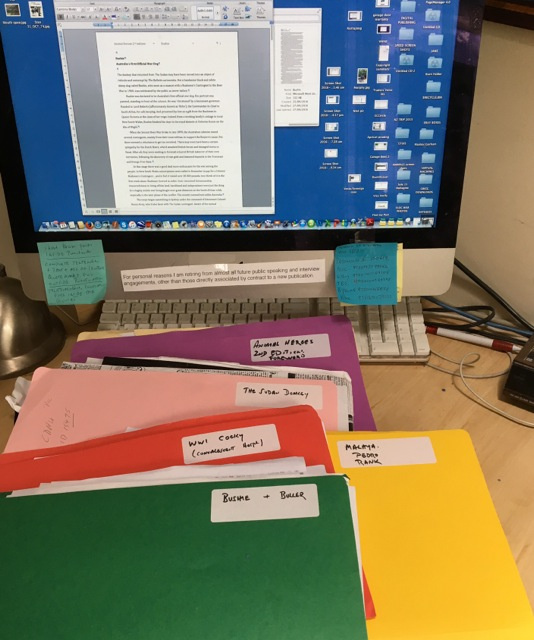Seven sensible steps to success as a writer
Step 4 (continued) Managing the research

It’s one thing to accumulate a vast amount of research. The trick for the writer is to know what to do with it, and how to access the material easily as and when you need it for the next stage of the book.
 It may be the former public servant in me, but those who read the first half dozen posts in this series will know I take a rather bureaucratic approach to my filing system. The research papers and photographs I keep in large subject files, divided into reasonably comprehensive and labelled sub-sections.
It may be the former public servant in me, but those who read the first half dozen posts in this series will know I take a rather bureaucratic approach to my filing system. The research papers and photographs I keep in large subject files, divided into reasonably comprehensive and labelled sub-sections.
When it comes to the writing, each chapter has its own folder with copies of the material, photos, drafts and references to use during the long process of composition, rewriting, checking and double-checking facts, editing, preparing the chapter notes, and so on.
I might add that, when I said the initial research can occupy a year or more, that’s only the preliminary work. In fact the hunt for relevant material continues right through the composition. New leads are constantly suggesting themselves. Indeed, it may go on right up to the page proofs if some essential new fact turns up.
When I was writing Captain Cook’s Apprentice, I imagined the Sailing Master, Robert Molineux, to be something of a rough-spoken Liverpool ‘tarpaulin’ who’d risen from the ranks to the quarter-deck. The scant information I had suggested it.
Quite by chance, during the editorial process before going to press, I found a copy of his portrait. Here was no mess-deck jack but a young gentleman with his refined features, curled hair and velvet coat. I had to change his character and voice completely – and give thanks for a publisher who understood immediately the need to do so.
Next: Social Landscapes
Photos show the chapter files for Animal Heroes: me as 'muscles' at the wheel of Endeavour during the research voyage.

